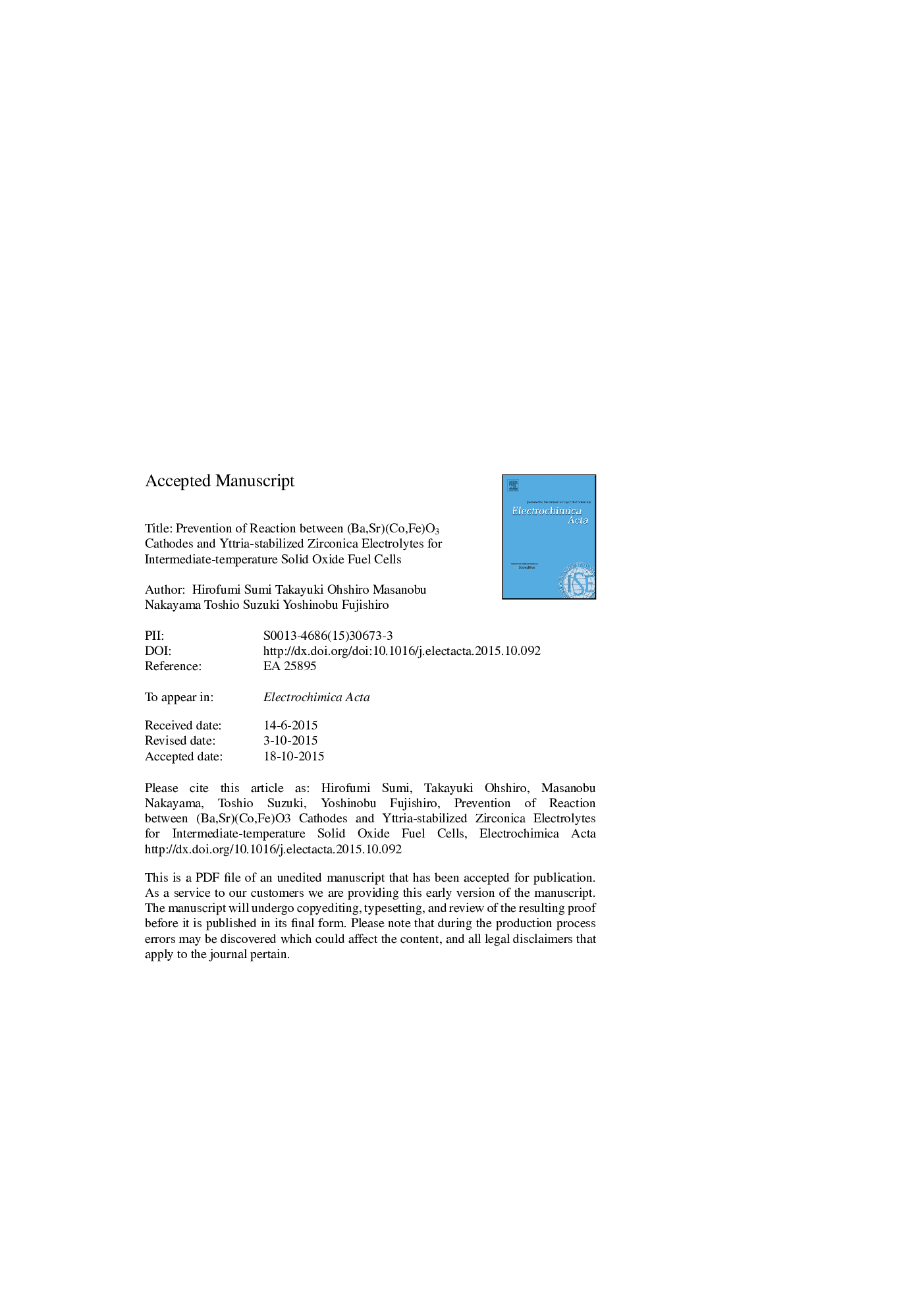| Article ID | Journal | Published Year | Pages | File Type |
|---|---|---|---|---|
| 6609732 | Electrochimica Acta | 2015 | 32 Pages |
Abstract
Perovskite (Ba,Sr)(Co,Fe)O3 (BSCF) cathodes are highly electrochemically active in the oxygen reduction process for intermediate-temperature solid oxide fuel cells (IT-SOFCs). However, the phase of perovskite zirconate is formed between the BSCF cathode and yttria-stabilized zirconia (YSZ) electrolyte, which increased the cathode polarization resistance. In the present work, the (Ba,Sr)ZrO3 formation was not prevented by the insertion of a porous gadolinia-doped ceria (GDC) interlayer between the cathode and the electrolyte, when the BSCF cathode was sintered at 1100 °C. Energy dispersive X-ray spectroscopy showed that the product of (Ba,Sr)ZrO3 formed between BSCF and YSZ was thicker than that of SrZrO3 formed between a conventional (La,Sr)(Co,Fe)O3 (LSCF) and YSZ. When a BSCF cathode was sintered at 900 °C, no (Ba,Sr)ZrO3 formation was observed between the cathode and the electrolyte. The maximum power density at 650 °C was improved from 7.5 to 740 mW/cm2 by decreasing the sintering temperature of BSCF cathode from 1100 °C to 900 °C. Distribution of relaxation times (DRT) analysis showed that the polarization resistance of the oxygen exchange process in the BSCF cathode sintered at 900 °C was lower than that in the LSCF cathode. The sintering temperature is important for obtaining high-performance BSCF cathodes for IT-SOFCs.
Related Topics
Physical Sciences and Engineering
Chemical Engineering
Chemical Engineering (General)
Authors
Hirofumi Sumi, Takayuki Ohshiro, Masanobu Nakayama, Toshio Suzuki, Yoshinobu Fujishiro,
